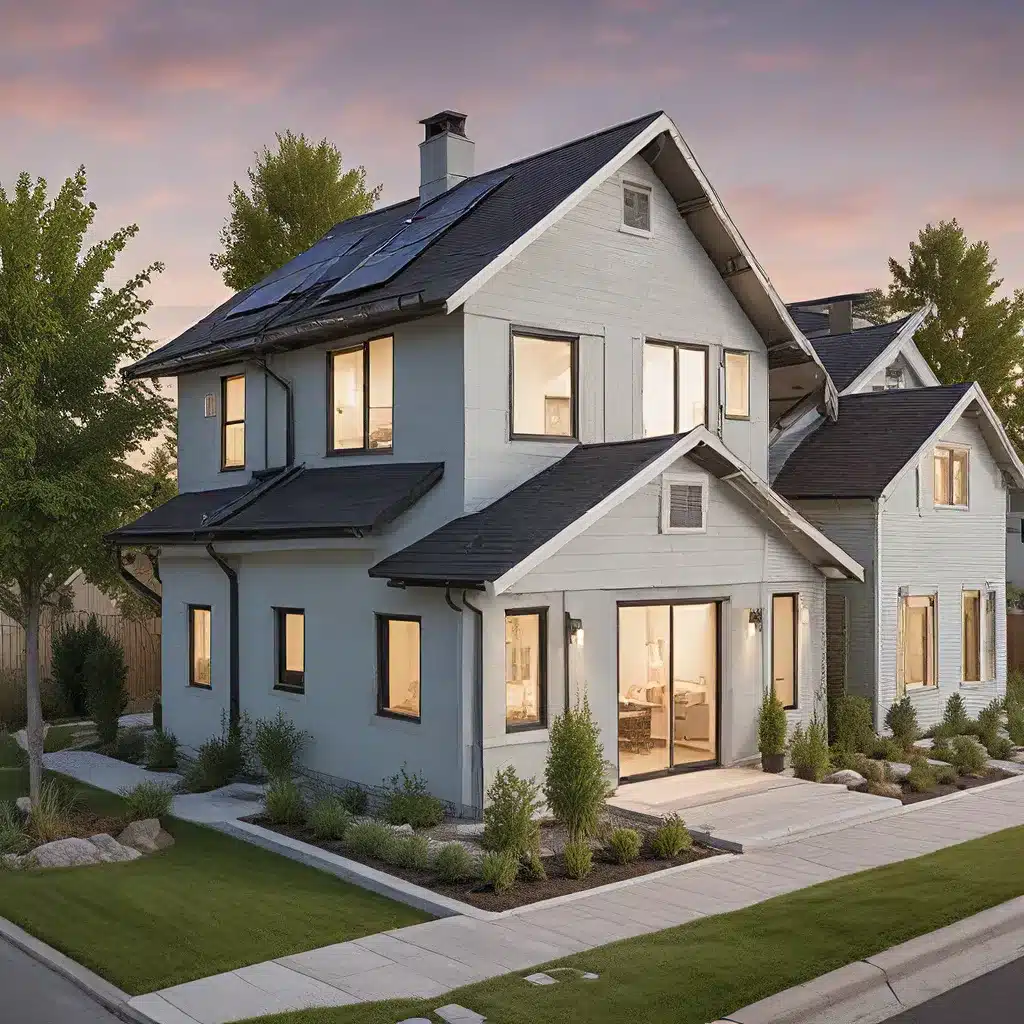
In the rapidly evolving world of the Internet of Things (IoT), the rise of sensor-enabled smart homes has been a game-changer, transforming the way we interact with our living spaces. These innovative systems, powered by a network of interconnected sensors, have the potential to revolutionize energy efficiency, improve resident comfort, and even enhance overall home security.
Unlocking the Potential of Sensor Networks in Smart Homes
At the heart of a smart home lies a sensor network, a collection of devices that gather data from the environment and communicate with a central control system. These sensors can monitor a wide range of parameters, from temperature and humidity to motion and light levels, enabling the home to adapt and respond to the changing needs of its occupants.
One of the key benefits of sensor-enabled smart homes is their ability to optimize energy efficiency. By continuously monitoring energy consumption patterns, smart home systems can automatically adjust lighting, heating, and cooling systems to minimize waste and reduce utility bills. For example, a smart thermostat can learn the homeowners’ preferences and daily routines, adjusting the temperature accordingly to maintain comfort while minimizing energy usage.
Furthermore, sensor networks in smart homes can enhance resident comfort by creating personalized environments. Integrated sensors can detect occupancy, movement, and even individual preferences, allowing the home to automatically adjust lighting, music, and other settings to suit the specific needs and preferences of each resident.
Smart home technology also provides homeowners with a heightened sense of security. Motion sensors, door and window sensors, and surveillance cameras can monitor the home and alert residents or emergency services in the event of any suspicious activity, helping to deter burglars and keep families safe.
Designing Efficient and Secure Sensor Networks
Crafting an effective sensor-enabled smart home requires careful consideration of various factors, from network topology to energy management and security protocols.
Network Topology and Connectivity
The choice of network topology plays a crucial role in the efficiency and reliability of a smart home sensor network. Mesh networks, for instance, offer robust connectivity, as each node can relay data to the central hub, ensuring that the system remains operational even if a single node fails.
In contrast, star networks centralize communication, with all sensors connecting directly to a central controller. While simpler to set up, star networks can be more vulnerable to a single point of failure.
| Network Topology | Advantages | Disadvantages |
|---|---|---|
| Mesh Network | – Robust connectivity – Self-healing capabilities – Increased coverage and range |
– Increased complexity in setup and configuration – Higher energy consumption due to multi-hop communication |
| Star Network | – Simpler to set up and configure – Lower energy consumption for sensor nodes |
– Single point of failure (central controller) – Limited range and coverage |
Energy Management Strategies
Efficient energy management is crucial for the long-term sustainability and viability of smart home sensor networks. Low-power communication protocols, such as Zigbee and Z-Wave, can significantly reduce the energy consumption of sensor nodes, ensuring extended battery life and reducing the need for frequent maintenance.
Additionally, energy harvesting technologies, such as solar panels or thermoelectric generators, can supplement the power sources for sensor nodes, further improving the overall energy efficiency of the system.
Security and Privacy Considerations
As sensor-enabled smart homes become increasingly prevalent, the importance of data security and privacy cannot be overstated. Robust encryption and authentication mechanisms are essential to protect sensitive information, such as occupancy patterns, energy consumption data, and surveillance footage, from unauthorized access or misuse.
Emerging security protocols, such as OAuth 2.0 and OpenID Connect, can help secure the communication between smart home devices and the central control system, ensuring that only authorized entities can access and manipulate the data.
Navigating the Smart Home Landscape
The smart home market is rapidly evolving, with a wide range of IoT devices and platforms available to homeowners. Choosing the right smart home ecosystem can be a daunting task, as compatibility and interoperability between devices are critical considerations.
Emerging standards, such as Matter, are aimed at addressing these challenges, providing a common framework for smart home devices to communicate seamlessly, regardless of the manufacturer or platform.
Embracing the Future of Sensor-Enabled Smart Homes
As sensor networks and IoT technologies continue to advance, the smart home of the future will become increasingly sophisticated, offering homeowners a level of automation, efficiency, and personalization that was once unimaginable.
Sensor-enabled smart homes are poised to play a crucial role in the sustainability and livability of our built environments, empowering homeowners to take control of their energy usage, enhance their comfort, and strengthen the security of their homes.
By understanding the design principles, energy management strategies, and security considerations that underpin these innovative systems, homeowners and industry professionals alike can harness the full potential of sensor networks to create smart homes that are not only efficient but also responsive to the evolving needs of their residents.